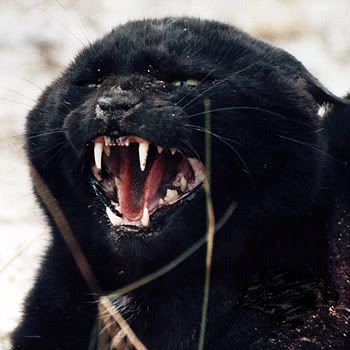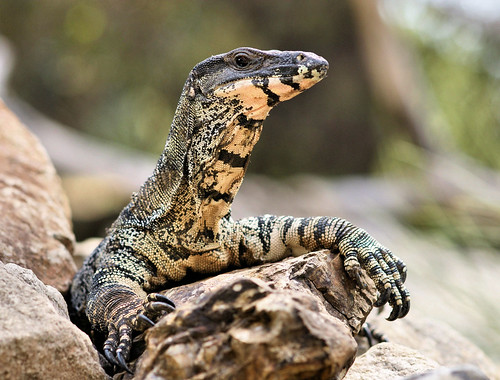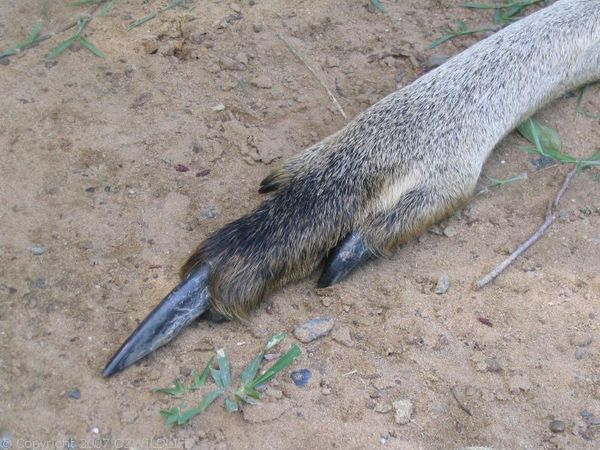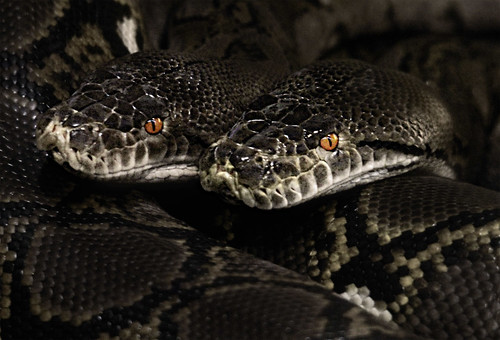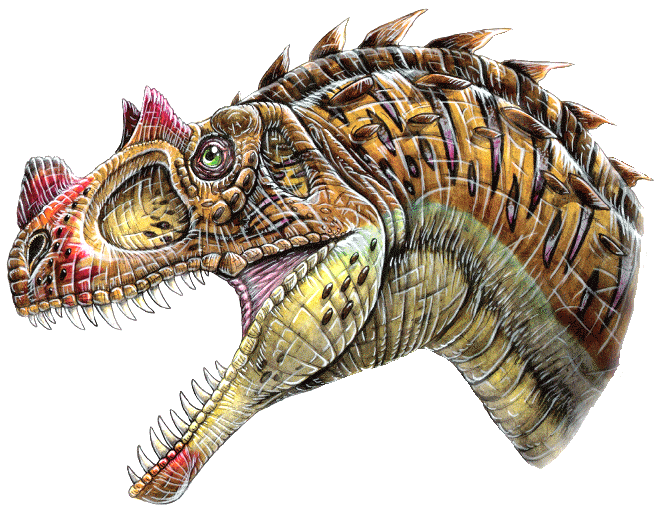Post by Felis Rex on Mar 1, 2012 23:20:29 GMT -5
RED KANGAROO - Macropus rufus

This species is a very large kangaroo with long, pointed ears and a squared-off muzzle. Males have short, red-brown fur, fading to pale buff below and on the limbs. Females are smaller than males and are blue-grey with a brown tinge, pale grey below, although arid zone females are coloured more like males. It has two forelimbs with small claws, two muscular hind-limbs, which are used for jumping, and a strong tail which is often used to create a tripod when standing upright.
The red kangaroo's legs work much like a rubber band. The males can leap over 9 metres (30 ft) in one leap.
Males grow up to a body length of 3 metres (9.8 ft) long and weigh up to 135 kilograms (300 lb). Females reach a body length of up to 1.1 metres (3.6 ft) long and weigh up to 35 kilograms (77 lb). Tails can be from 0.9 to 1 metre (3.0–3.3 ft) long. The average red kangaroo stands approximately 1.5 metres (4.9 ft) tall.[4] Accounts of sizes greater than this are not uncommon, with some large males reportedly reaching approximately 2 metres (6 ft 7 in).
ROCKY MOUNTAIN BIGHORN SHEEP - Ovis canadensis

Bighorn sheep are named for the large, curved horns borne by the rams (males). Ewes (females) also have horns, but they are shorter with less curvature. They range in color from light brown to grayish or dark, chocolate brown, with a white rump and lining on the back of all four legs. Males typically weigh 127–316 pounds (58–143 kg), are 36–41 inches (91–100 cm) tall at the shoulder, and 69–79 inches (180–200 cm) long from the nose to the tail. Females are typically 75–188 pounds (34–85 kg), 30–36 inches (76–91 cm) tall and 54–67 inches (140–170 cm) long. Male bighorn sheep have large horn cores, enlarged cornual and frontal sinuses and internal bony septa. These adaptations serve to protect the brain by absorbing the impact of clashes. Bighorn sheep have pre-orbital glands on the anterior corner of each eye, inguinal glands in the groin and pedal glands on each foot. Secretions from these glands may support dominance behaviors.
Bighorns from the Rocky Mountains are relatively large, with males that occasionally exceed 500 lb (230 kg) and females that exceed 200 lb (90 kg). In contrast, Sierra Nevada Bighorn males weigh up to only 200 lb (90 kg) and females to 140 lb (60 kg). Males' horns can weigh up to 30 lb (14 kg), as much as the rest of the bones in the male's body

This species is a very large kangaroo with long, pointed ears and a squared-off muzzle. Males have short, red-brown fur, fading to pale buff below and on the limbs. Females are smaller than males and are blue-grey with a brown tinge, pale grey below, although arid zone females are coloured more like males. It has two forelimbs with small claws, two muscular hind-limbs, which are used for jumping, and a strong tail which is often used to create a tripod when standing upright.
The red kangaroo's legs work much like a rubber band. The males can leap over 9 metres (30 ft) in one leap.
Males grow up to a body length of 3 metres (9.8 ft) long and weigh up to 135 kilograms (300 lb). Females reach a body length of up to 1.1 metres (3.6 ft) long and weigh up to 35 kilograms (77 lb). Tails can be from 0.9 to 1 metre (3.0–3.3 ft) long. The average red kangaroo stands approximately 1.5 metres (4.9 ft) tall.[4] Accounts of sizes greater than this are not uncommon, with some large males reportedly reaching approximately 2 metres (6 ft 7 in).
ROCKY MOUNTAIN BIGHORN SHEEP - Ovis canadensis

Bighorn sheep are named for the large, curved horns borne by the rams (males). Ewes (females) also have horns, but they are shorter with less curvature. They range in color from light brown to grayish or dark, chocolate brown, with a white rump and lining on the back of all four legs. Males typically weigh 127–316 pounds (58–143 kg), are 36–41 inches (91–100 cm) tall at the shoulder, and 69–79 inches (180–200 cm) long from the nose to the tail. Females are typically 75–188 pounds (34–85 kg), 30–36 inches (76–91 cm) tall and 54–67 inches (140–170 cm) long. Male bighorn sheep have large horn cores, enlarged cornual and frontal sinuses and internal bony septa. These adaptations serve to protect the brain by absorbing the impact of clashes. Bighorn sheep have pre-orbital glands on the anterior corner of each eye, inguinal glands in the groin and pedal glands on each foot. Secretions from these glands may support dominance behaviors.
Bighorns from the Rocky Mountains are relatively large, with males that occasionally exceed 500 lb (230 kg) and females that exceed 200 lb (90 kg). In contrast, Sierra Nevada Bighorn males weigh up to only 200 lb (90 kg) and females to 140 lb (60 kg). Males' horns can weigh up to 30 lb (14 kg), as much as the rest of the bones in the male's body

